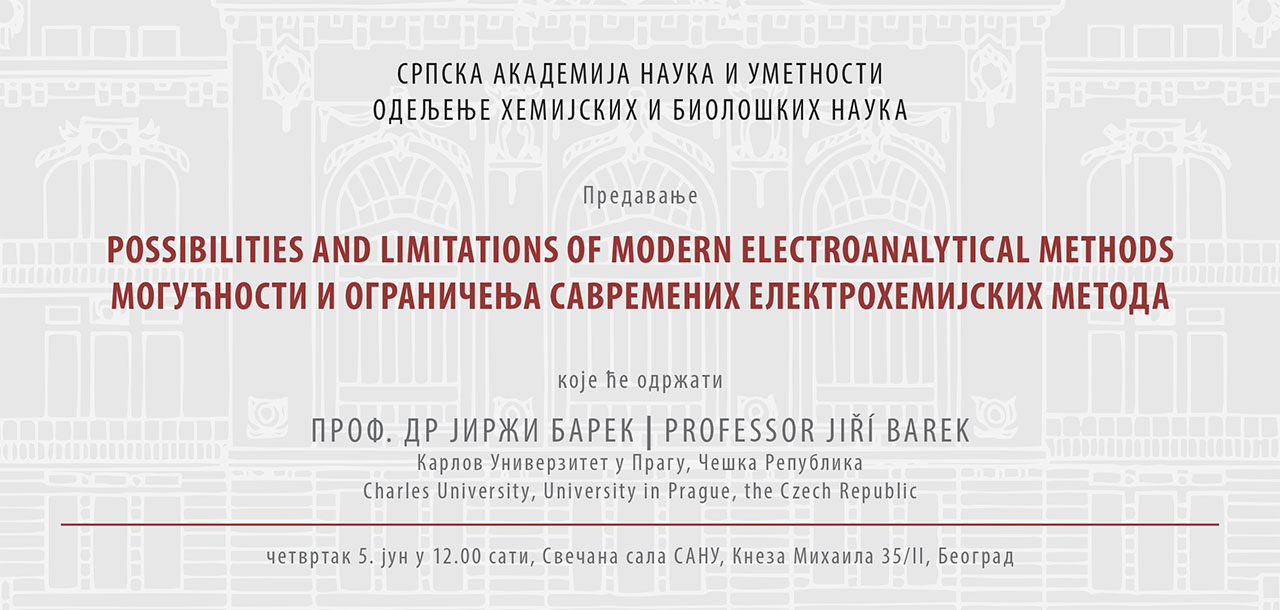Lecture by Professor Jiří Barek, PhD
’Possibilities and Limitations of Modern Electroanalytical Methods’ is the title of the lecture to be delivered by Professor Jiří Barek, PhD, on Thursday, 5 June, at noon, at the SASA Grand Hall.
The lecture aims to demonstrate that even in the age of fascinating possibilities of contemporary means of separation and spectrometric techniques, modern electroanalytical methods can play an important role in contemporary analytical chemistry. The reasons for this are their affordability, short analysis time, portability, and simplicity of use, as well as their alignment with the principles of green analytical chemistry, combined with satisfactory sensitivity and selectivity.
The lecture states,’ It is useful to recall that polarography, developed by Jaroslav Heyrovský over 100 years ago at our university in Prague, was the first analytical method with automatic registration of dependence of a signal on a certain parameter. This paved the way for extracting both qualitative and quantitative information and laid the foundation for many approaches used nowadays in all instrumental analytical techniques (e.g. standard addition method).
A central focus of Professor Barek’s presentation will be the development of novel electrode materials with improved performance, such as those with lower noise, broader potential windows, and higher resistance to passivation, which is one of the biggest problems in practical applications of modern voltammetric and amperometric techniques.
Professor Jiří Barek, PhD (born in 1949, Benešov, Czech Republic) graduated in chemistry in 1972 from the Faculty of Science at Charles University in Prague (PSCU), where he also obtained his doctorate in analytical chemistry in 1977. Since 2006, he has been a professor at the Department of Analytical Chemistry at PSCU, where he was an associate professor and lecturer. He held the position of Deputy Head of the Department of Analytical Chemistry (1993–1997) and subsequently Head of the Department (2006–2012).
Since 2012, he has helmed the UNESCO Laboratory of Environmental Electrochemistry, while in the period between 1999 and 2020, he also served as the head of the UNESCO Trace Element Satellite Centre. Professor Barek is the author of over 600 scientific publications, with more than 6,300 citations (excluding self-citations) and a Hirsch index of 45. He is the editor and co-author of numerous monographs and educational texts. He is a renowned member of various international scientific bodies and societies ž including the International Union of Pure and Applied Chemistry (IUPAC) and the Royal Society of Chemistry (UK). He is also an honorary member of the Serbian Chemical Society.
His work focuses primarily on the development of new electrochemical sensors, nano-structural electrodes and techniques for the trace detection of biologically active organic compounds.

